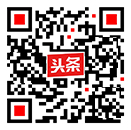[1] 苟文曦, 程镥轶, 吴焜. 登革热诊疗的最新研究进展[J].中国病原生物学杂志, 2024, 19(10): 1228-1233.
[2] 张萌, 何剑峰. 登革热流行趋势研究进展[J/CD].新发传染病电子杂志, 2018, 3(2): 72-74.
[3] 张复春. 中国登革热现状[J/CD].新发传染病电子杂志, 2018, 3(2): 65-66.
[4] WHO. Dengue-Global situation[EB/OL].[2024-05-30]. https://www.who.int/emergencies/disease-outbreak-news/item/2024-DON518.
[5] 杨蕊, 龙佳敏, 王霞, 等. 我国登革热的流行特征及监测预警研究进展[J]. 中华流行病学杂志, 2024, 45(2): 305-312.
[6] 李卓威, 黄晓霞, 田婷婷, 等. 我国2019—2023年登革热报告病例流行病学特征[J]. 中国热带医学, 2024, 24(8): 925-930.
[7] 刘起勇. 我国登革热流行新趋势、防控挑战及策略分析[J].中国媒介生物学及控制杂志, 2020, 31(1): 1-6.
[8] 赵建国, 马文军, 何冠豪, 等. 气温影响登革热传播的机制及未来气温变化对其传播风险的影响[J]. 环境与职业医学, 2022, 39(3): 309-314.
[9] 卫生部. 登革热诊断标准(WS 216—2008)[S]. 北京:中国出版社, 2008.
[10] 国家卫生和计划生育委员会. 登革热诊断标准(WS 216—2018)[S]. 北京:中国标准出版社, 2018.
[11] 中国疾病预防控制中心.登革热疫情现场调查处理规范[EB/OL]. [2024-09-06]. https://www.chinacdc.cn/jkyj/crb2/yl/dgr/jswj_dgr/202409/t20240906_298606.html
[12] KUMA S, ELDHO T, SUBIMAL G.Assessing the impacts of land cover and climate on runoff and sediment yield of a river basin[J].Hydrol Sci J, 2020, 65(12): 2097-2115.
[13] 万佳, 林良强, 阳帆, 等. 2013-2022年深圳市登革热流行特征分析[J]. 热带病与寄生虫学, 2023, 21(5): 258-262.
[14] 王亚丽, 王煊, 任瑞琦, 等. 中国2013-2016年境外输入传染病的流行病学特征[J]. 中华流行病学杂志, 2017, 38(11): 1499-1503.
[15] NI H, CAI X, REN J, et al.Epidemiological characteristics and transmission dynamics of dengue fever in China[J].Nat Commun, 2024, 15(1): 8060.
[16] 林良强, 张韶华, 朱子犁, 等. 2017年深圳市登革热白纹伊蚊密度与气象因素关系研究[J]. 中华卫生杀虫药械, 2022, 28(2): 140-143.
[17] LIU W, SHI C, LU Y, et al.Epidemiological characteristics of imported acute infectious diseases in Guangzhou, China, 2005-2019[J]. PLoS Negl Trop Dis, 2022, 16(12): e0010940.
[18] 杨丽莉, 景钦隆, 杨翠辉, 等. 广州市荔湾区2014年登革热疫情流行病学特征分析[J]. 中国热带医学, 2015, 15(9): 939-941,950.
[19] MORITZUG K, ROBERTC R, OLIVERJ B, et al.Past and future spread of the arbovirus vectors Aedes aegypti and Aedes albopictus[J].Nat Microbiol, 2019, 4(5): 854-863.
[20] OIDTMAN R, LAI S, HUANG Z, et al.Inter-annual variation in seasonal dengue epidemics driven by multiple interacting factors in Guangzhou, China[J].Nat Commun, 2019, 10(1): 1148.
[21] 阳帆, 王敬忠, 吴春利, 等. 深圳市2014年登革热流行病学和病原学特征研究[J]. 中华微生物学和免疫学杂志, 2016, 36(5): 367-373.
[22] 许增生, 周如意, 党如波, 等. 深圳市宝安区2019年一起本地感染登革热暴发疫情分析[J]. 首都食品与医药, 2023, 30(16): 78-81.
[23] ZHAO L, GUO X, LI L, et al.Phylodynamics unveils invading and diffusing patterns of dengue virus serotype-1 in Guangdong, China from 1990 to 2019 under a global genotyping framework[J].Infect Dis Poverty, 2024, 13(1): 43.
[24] JIANG L, LIU Y, SU W, et al.Epidemiological and genomic analysis of dengue cases in Guangzhou, China, from 2010 to 2019[J].Sci Rep, 2023, 13(1): 2161.
[25] 邓淑珍, 刘肖钰, 常利涛, 等. 2023年云南省登革热暴发疫情的流行病学特征分析[J]. 中国国境卫生检疫杂志, 2024, 47(5): 500-504.
[26] 陈昕璐, 台宗光, 朱全刚, 等. 驱蚊剂的研究新进展[J]. 药学实践与服务, 2023, 41(2): 81-85.
[27] 陈木新, 黄宗胜, 魏望远. 一种用于杀灭登革热等蚊媒传染病传播媒介蚊子的展膜油剂卫生杀虫剂及其制备方法[P]. 202011456561 .
[27] 陈曼娜, 林少荣, 李冰莹. 病毒NS1抗原捕获酶联免疫吸附试验在登革热筛查中的应用价值[J]. 临床医学研究与实践, 2020, 5(23): 36-37. |




